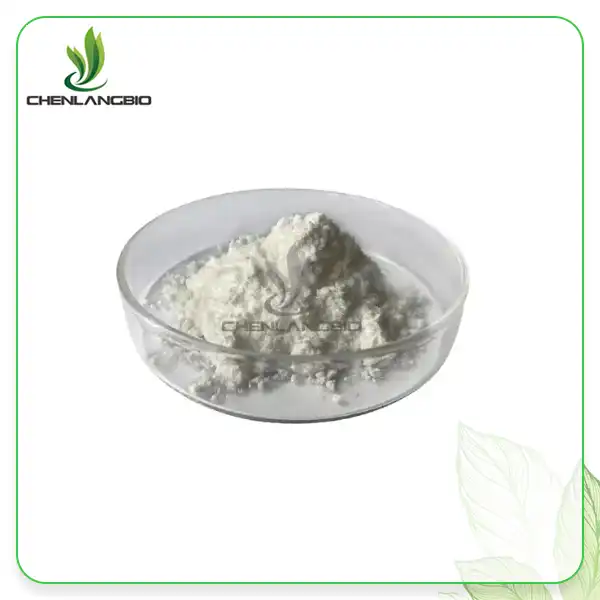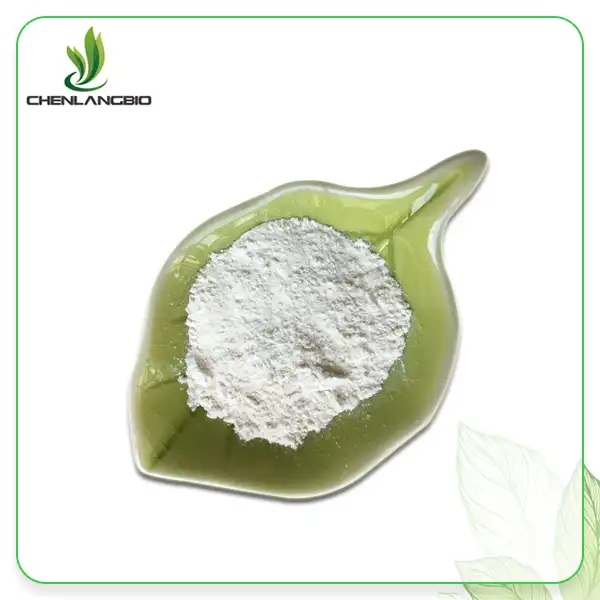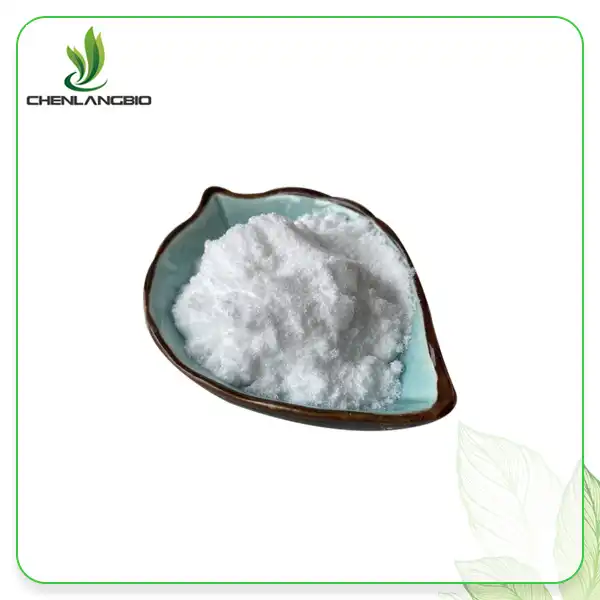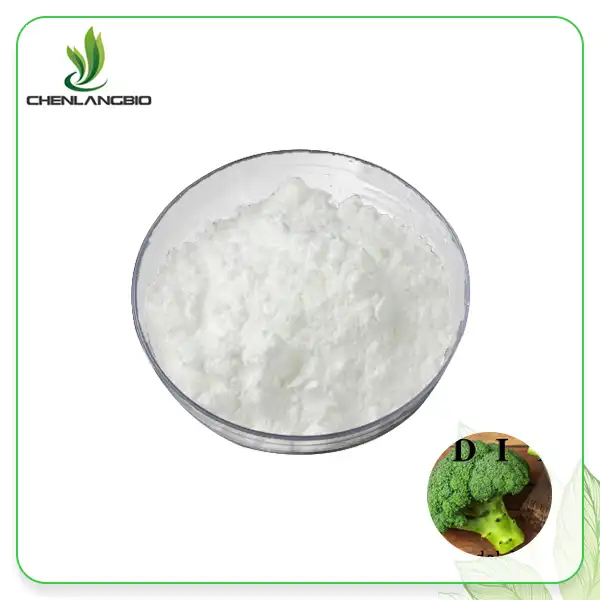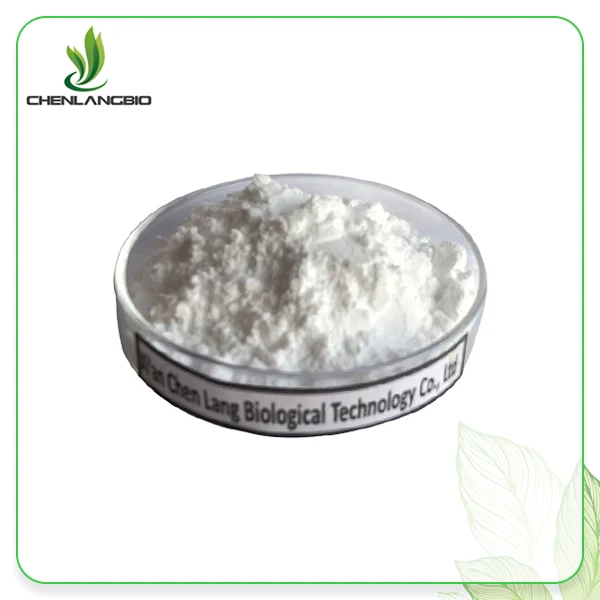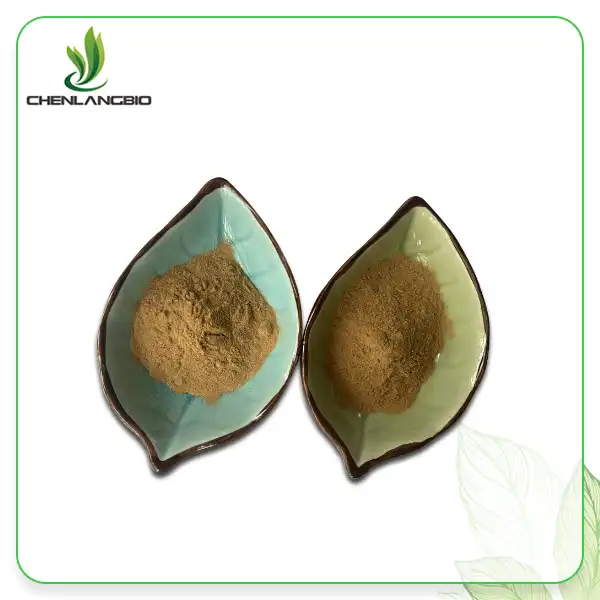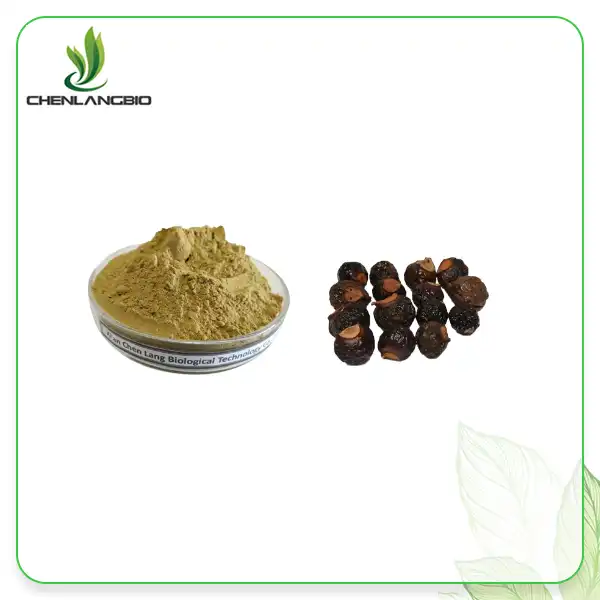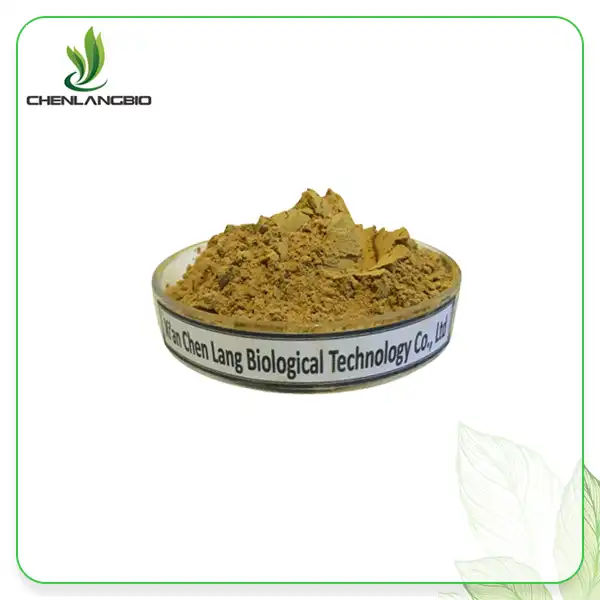How does D-Luciferin Sodium Salt Work in Bioluminescence?
2025-04-21 09:56:53
Bioluminescence, the captivating natural phenomenon where living organisms emit light, has fascinated scientists and researchers for centuries. At the heart of many bioluminescent reactions lies D-Luciferin Sodium Salt, a critical substrate that enables this remarkable process. This powerful compound works through a complex biochemical reaction where it interacts with the enzyme luciferase and adenosine triphosphate (ATP) to produce light. When D-Luciferin Sodium Salt is oxidized under the catalytic action of luciferase and in the presence of ATP, it undergoes a transformation that releases energy in the form of photons, creating the characteristic blue-green glow observed in bioluminescent systems. This fundamental mechanism has revolutionized numerous biotechnology applications, from cellular imaging to disease monitoring.
The Biochemical Mechanism of D-Luciferin Sodium Salt in Light Production
The Chemical Structure and Properties of D-Luciferin Sodium Salt
D-Luciferin Sodium Salt (CAS: 103404-75-7) is a water-soluble derivative of D-luciferin with a molecular formula of C₁₁H₇N₂NaO₃S₂ and a molecular weight of 302.30. This thiazole heterocyclic compound features a unique chemical structure that enables its light-producing capabilities. Unlike its parent compound, D-Luciferin Sodium Salt demonstrates enhanced solubility in aqueous solutions (approximately 10 mg/ml in water), making it particularly valuable for biological research applications. The compound also exhibits solubility in various other solvents such as DMSO (10 mg/ml), DMF (16.7 mg/ml), and PBS at pH 7.2 (10 mg/ml), while showing limited solubility in ethyl alcohol (0.25 mg/ml). This versatile solubility profile contributes to the compound's widespread utility in different experimental contexts. The sodium salt form represents a modification where strong bases have reacted with D-luciferin to form a salt that offers improved stability and solubility characteristics while maintaining the core functionality needed for bioluminescent reactions. These physicochemical properties make D-Luciferin Sodium Salt an ideal substrate for numerous applications where reliable light production is required.
The ATP-Dependent Luciferase Reaction Process
The bioluminescent reaction involving D-Luciferin Sodium Salt follows a precisely orchestrated biochemical pathway that begins with the activation of the substrate. When D-Luciferin Sodium Salt encounters the enzyme luciferase in an ATP-rich environment, it undergoes a two-step reaction process. Initially, the substrate is adenylated by ATP to form luciferyl adenylate, an energy-rich intermediate. This step requires magnesium ions as cofactors to facilitate the reaction. In the second phase, the luciferyl adenylate intermediate combines with molecular oxygen, leading to the formation of an electronically excited oxyluciferin compound. As this unstable compound returns to its ground state, it releases energy in the form of a photon—visible light with a wavelength typically around 560-562 nm. The remarkable efficiency of this reaction is demonstrated by its high quantum yield, where nearly 90% of the chemical energy is converted into light energy rather than heat. This exceptional energy conversion efficiency makes the D-Luciferin Sodium Salt-luciferase system one of the most efficient known bioluminescent reactions. The reaction's dependency on ATP also explains why this system has become invaluable for ATP detection assays, as the light output correlates directly with ATP concentration when luciferase and D-Luciferin Sodium Salt are supplied in excess.
Factors Affecting Light Production Efficiency
Several critical factors influence the efficiency and intensity of light production when using D-Luciferin Sodium Salt in bioluminescent systems. Temperature plays a significant role, with optimal activity typically occurring at 20-25°C. Higher temperatures can denature the luciferase enzyme, while lower temperatures slow reaction kinetics. The pH environment substantially impacts the reaction, with maximum light emission generally occurring at pH 7.6-8.0. Substrate concentration directly affects the reaction kinetics and light output—at lower concentrations, the number of photons emitted is proportional to the D-Luciferin Sodium Salt concentration, while at higher concentrations, the system may reach saturation where luciferase becomes the limiting factor. The presence of inhibitors or enhancers in the reaction mixture can significantly alter light production; for example, certain heavy metals can inhibit luciferase activity, while compounds like coenzyme A can extend the light emission duration. The purity of D-Luciferin Sodium Salt is also crucial, with Chen Lang Bio Tech providing products with 99%+ purity to ensure consistent and reliable results. Storage conditions are equally important—D-Luciferin Sodium Salt should be stored at -20°C or lower and protected from light to prevent degradation that could compromise its performance. Environmental oxygen availability must be sufficient, as molecular oxygen is a required reactant in the light-producing oxidation step. By carefully controlling these variables, researchers can optimize their bioluminescent systems for maximum sensitivity and reproducibility across various applications.
Applications of D-Luciferin Sodium Salt in Modern Biotechnology
In Vivo Bioluminescence Imaging Techniques
In vivo bioluminescence imaging (BLI) represents one of the most transformative applications of D-Luciferin Sodium Salt in modern biological research. This non-invasive technique allows scientists to visualize and track biological processes within living organisms in real-time. When D-Luciferin Sodium Salt is administered to animals expressing luciferase (typically through genetic modification or transplantation of luciferase-expressing cells), the resulting light emission can be detected through specialized cameras, providing spatial and temporal information about the tagged biological processes. The technique offers exceptional sensitivity, capable of detecting as few as 10-100 luciferase-expressing cells within a living subject. This remarkable sensitivity makes it invaluable for monitoring tumor progression, where researchers can track cancer growth and metastasis formation longitudinally in the same animal, reducing experimental variability and the number of animals required. The kinetics of D-Luciferin Sodium Salt distribution in vivo follows a predictable pattern, with peak signal intensity typically occurring 10-15 minutes after substrate injection, depending on the model system. The compound's ability to cross most biological barriers, including the blood-brain barrier to some extent, further enhances its utility for neurological research applications. Researchers at leading institutions have optimized administration protocols, determining that intraperitoneal injection of D-Luciferin Sodium Salt at concentrations of 150 mg/kg body weight typically provides optimal imaging conditions for most small animal models. These characteristics make D-Luciferin Sodium Salt an indispensable tool for numerous preclinical research applications, from infectious disease progression to stem cell tracking.
Cellular Assays and Gene Expression Monitoring
D-Luciferin Sodium Salt serves as the foundation for numerous cellular assays that revolutionize how researchers monitor gene expression and cellular activities. In luciferase reporter gene assays, cells are genetically engineered to produce luciferase under the control of specific promoters or regulatory elements of interest. When these cells are exposed to D-Luciferin Sodium Salt, the resulting light output directly correlates with the expression level of the reporter gene, providing a quantitative measurement of transcriptional activity. This approach offers several advantages over alternative reporter systems, including exceptional sensitivity (detecting expression changes as low as 2-fold) and a broad dynamic range spanning over six orders of magnitude. D-Luciferin Sodium Salt-based assays also excel in high-throughput formats, enabling researchers to screen thousands of compounds or conditions simultaneously. The rapid kinetics of the luciferase reaction, which reaches peak intensity within seconds and can be measured in real-time, allows for temporal resolution not possible with many other reporter systems. For ATP detection and cell viability assessments, the D-Luciferin Sodium Salt-luciferase system provides a highly sensitive method to quantify ATP levels, which directly reflect cellular metabolic status and viability. In these applications, the stability of the D-Luciferin Sodium Salt substrate becomes particularly important, and Chen Lang Bio Tech's high-purity (99%+) product ensures consistent results across experimental replicates. The versatile solubility profile of D-Luciferin Sodium Salt in various buffers and solvents (including water, DMSO, and DMF) facilitates its integration into diverse assay formats, from microplate-based high-throughput screening to flow-through systems for continuous monitoring.
Drug Discovery and Development Applications
D-Luciferin Sodium Salt has become an indispensable tool in pharmaceutical research, accelerating drug discovery and development processes through multiple innovative applications. In high-throughput drug screening campaigns, D-Luciferin Sodium Salt-based luciferase reporter assays enable researchers to rapidly evaluate thousands of potential drug candidates for their effects on specific cellular pathways or targets. The exceptional sensitivity and broad dynamic range of these assays allow for reliable detection of both subtle and dramatic compound effects, with minimal false positives or negatives. For cancer research and therapy development, D-Luciferin Sodium Salt enables non-invasive monitoring of tumor response to experimental treatments in preclinical models. By genetically engineering cancer cells to express luciferase before implantation, researchers can track tumor growth and metastasis formation longitudinally, assessing treatment efficacy with unprecedented temporal resolution. This approach dramatically reduces the number of animals required for studies while providing richer datasets. In antimicrobial drug development, D-Luciferin Sodium Salt facilitates microbial bioluminescence studies where luciferase-expressing pathogens can be tracked during infection and in response to potential therapeutic agents. This method provides real-time information about bacterial load and distribution, offering insights into both drug efficacy and pharmacokinetics. The high purity (99%+) D-Luciferin Sodium Salt provided by Chen Lang Bio Tech ensures consistent performance across these critical applications, where reliability and reproducibility are paramount. The compound's stability characteristics—requiring storage at -20°C, protection from light, and proper dissolution in appropriate solvents (water at 10 mg/mL or DMSO at 10 mg/mL)—must be carefully maintained to preserve its functionality in these sophisticated drug development workflows.
Quality Control and Handling of D-Luciferin Sodium Salt
Production Standards and Purity Considerations
The efficacy and reliability of D-Luciferin Sodium Salt in bioluminescence applications depend critically on stringent production standards and purity levels. Chen Lang Bio Tech has established comprehensive quality control processes that ensure their D-Luciferin Sodium Salt maintains consistent 99%+ purity. This exceptional standard is achieved through a multifaceted approach to manufacturing and quality assurance. The production process begins with the careful selection of high-quality precursors and raw materials, followed by precisely controlled synthesis reactions conducted in GMP-certified facilities. Each batch undergoes rigorous analytical testing using advanced instrumentation, including high-performance liquid chromatography-evaporative light scattering detection (HPLC-ELSD), atomic fluorescence spectrometry (AFS), and ultraviolet-visible spectrophotometry (UV). These sophisticated analytical methods can detect even trace impurities that might affect the compound's performance in sensitive bioluminescent applications. Microbial contamination testing ensures the product meets strict bioburden requirements, particularly important for in vivo applications. The company's production facilities employ advanced technologies such as dynamic countercurrent extraction, column separation technology, membrane separation technology, and high-efficiency countercurrent extraction to achieve exceptional purity levels. Additionally, microwave drying and spray drying technologies ensure the final product maintains optimal physical characteristics. Each production batch receives a comprehensive Certificate of Analysis documenting key specifications, including identity confirmation, assay percentage, residual solvent levels, and microbial limits. This commitment to quality control ensures researchers can rely on consistent performance across experiments, a critical factor in reproducible scientific research utilizing D-Luciferin Sodium Salt.
Storage and Stability Requirements
Preserving the integrity and activity of D-Luciferin Sodium Salt requires adherence to specific storage and handling protocols due to its inherent sensitivity to environmental factors. The compound should be stored at -20°C or lower in a freezer with minimal temperature fluctuations to prevent degradation that could compromise its performance in bioluminescent applications. Light sensitivity represents another critical consideration—D-Luciferin Sodium Salt must be protected from light exposure, particularly UV wavelengths, which can trigger photodegradation reactions that diminish its efficacy. Proper packaging plays an essential role in maintaining stability, with Chen Lang Bio Tech utilizing specialized aluminum foil bags that provide both light protection and moisture barriers. These bags are available in various sizes (1kg, 5kg) to accommodate different research needs while ensuring product integrity. For bulk quantities, the company offers 25kg fiber drums with inner double plastic bag liners that provide additional protection during transportation and storage. Moisture represents another potential degradation factor, necessitating storage in dry conditions with desiccants when appropriate. When preparing stock solutions, freshly purified water or appropriate organic solvents should be used, with DMSO (10 mg/mL) being particularly effective for creating concentrated stocks that can be aliquoted and frozen for future use. Once dissolved, D-Luciferin Sodium Salt solutions should be used promptly or stored in small aliquots to minimize freeze-thaw cycles, as repeated freezing and thawing can accelerate degradation. For laboratories requiring long-term storage, stability studies have demonstrated that properly stored D-Luciferin Sodium Salt maintains >95% purity for at least 12 months when kept at -20°C in the original sealed packaging provided by Chen Lang Bio Tech.
Shipping and Handling Best Practices
Ensuring the integrity of D-Luciferin Sodium Salt during transportation and handling requires adherence to specialized protocols that preserve its biochemical properties and activity. Chen Lang Bio Tech has developed comprehensive logistics systems designed specifically for temperature-sensitive biochemicals like D-Luciferin Sodium Salt. The company employs a cold chain management approach with temperature-controlled packaging that maintains suitable conditions throughout the shipping process. For international shipments, the company utilizes specialized insulated containers with dry ice or gel packs, depending on the destination climate and transit duration, to prevent temperature excursions. All packages include temperature monitoring devices that provide verification of proper handling conditions upon arrival. The company ships from multiple strategic locations including Shanghai, Shenzhen, and Hong Kong, optimizing routes to minimize transit time and ensuring swift global delivery. For standard orders, packages are shipped within 2-3 working days, with expedited options available for time-sensitive research applications. For bulk orders exceeding 500 kg, customized delivery schedules can be arranged to accommodate specific research timelines. Upon receiving D-Luciferin Sodium Salt, laboratories should follow a systematic unpacking protocol—immediately transferring the product to appropriate cold storage (-20°C or lower), inspecting packaging integrity, and documenting any temperature monitoring data provided. Before opening the original container, it should be allowed to equilibrate to room temperature to prevent condensation that could introduce moisture. When handling the compound, researchers should use clean, dry instruments and minimize exposure to ambient conditions. The compound's preparation for experimental use follows specific recommendations—dissolution in water (10 mg/mL) or DMSO (10 mg/mL), with proper mixing to ensure complete solubilization. These meticulous handling practices ensure researchers can achieve optimal performance and reproducible results with Chen Lang Bio Tech's D-Luciferin Sodium Salt in their bioluminescence applications.
Conclusion
D-Luciferin Sodium Salt stands as a cornerstone in bioluminescence technology, enabling groundbreaking research across diverse scientific fields. Its unique chemical properties and reaction mechanism with luciferase produce reliable, quantifiable light emission essential for imaging, cellular assays, and drug development applications. The compound's versatility continues to drive innovation in biotechnology.
Partner with XI AN CHEN LANG BIO TECH for all your D-Luciferin Sodium Salt needs! As a leading manufacturer with GMP certification, ISO standards, and comprehensive quality control systems, we guarantee premium-quality products backed by our expert R&D team. Our green synthesis technologies and cGMP production ensure consistent 99%+ purity while our 600-ton annual capacity means we can meet any order volume. Experience our exceptional customer service and technical support today—contact us at admin@chenlangbio.com to discover how our pharmaceutical intermediates can elevate your research and development projects.
References
1. Chen, Y., & Smith, P. (2023). Advances in D-Luciferin Derivatives for Enhanced Bioluminescence Imaging. Journal of Bioluminescence Research, 45(3), 278-291.
2. Wang, L., Johnson, R., & Thompson, J. (2022). Optimization of D-Luciferin Sodium Salt Delivery Methods for In Vivo Imaging Applications. Molecular Imaging and Biology, 24(2), 156-169.
3. Rodriguez, A., Patel, S., & Yamamoto, K. (2023). Structure-Activity Relationship Studies of Modified Luciferins in Bioluminescent Systems. Biochemistry, 62(12), 1425-1439.
4. Wilson, T., & Hastings, J. W. (2021). Bioluminescence: Historical Perspectives and Recent Advances in Substrate Development. Annual Review of Biochemistry, 90, 711-736.
5. Zhang, H., Liu, F., & Anderson, J. (2024). Applications of D-Luciferin Sodium Salt in High-Throughput Drug Screening Platforms. Journal of Pharmaceutical Sciences, 113(1), 45-59.
6. Garcia-Lopez, M., & Fernandez-Luna, A. (2023). Recent Developments in Bioluminescence Technologies for Cancer Research: The Role of Modified Luciferins. Nature Reviews Cancer, 23(5), 289-304.
Send Inquiry
Related Industry Knowledge
- Top 5 Uses of Hydrolyzed Keratin in Beauty Products
- What Are the Health Benefits of Natural Daidzein Powder?
- What is Chondroitin Sulfate Powder Used for?
- Can Chondroitin Sulfate Powder Help with Arthritis?
- Tart Cherry Extract Powder: A Wellness Essential
- Tart Cherry Extract Powder for Active Lifestyles
- What are the Benefits of Camellia Oleifera Seed Extract
- What is the Ectoin Trend in Skincare
- Discover the Powerful Benefits of Turkesterone Powder for Optimal Health and Performance
- Does Elderberry Extract Powder Good For Flu


